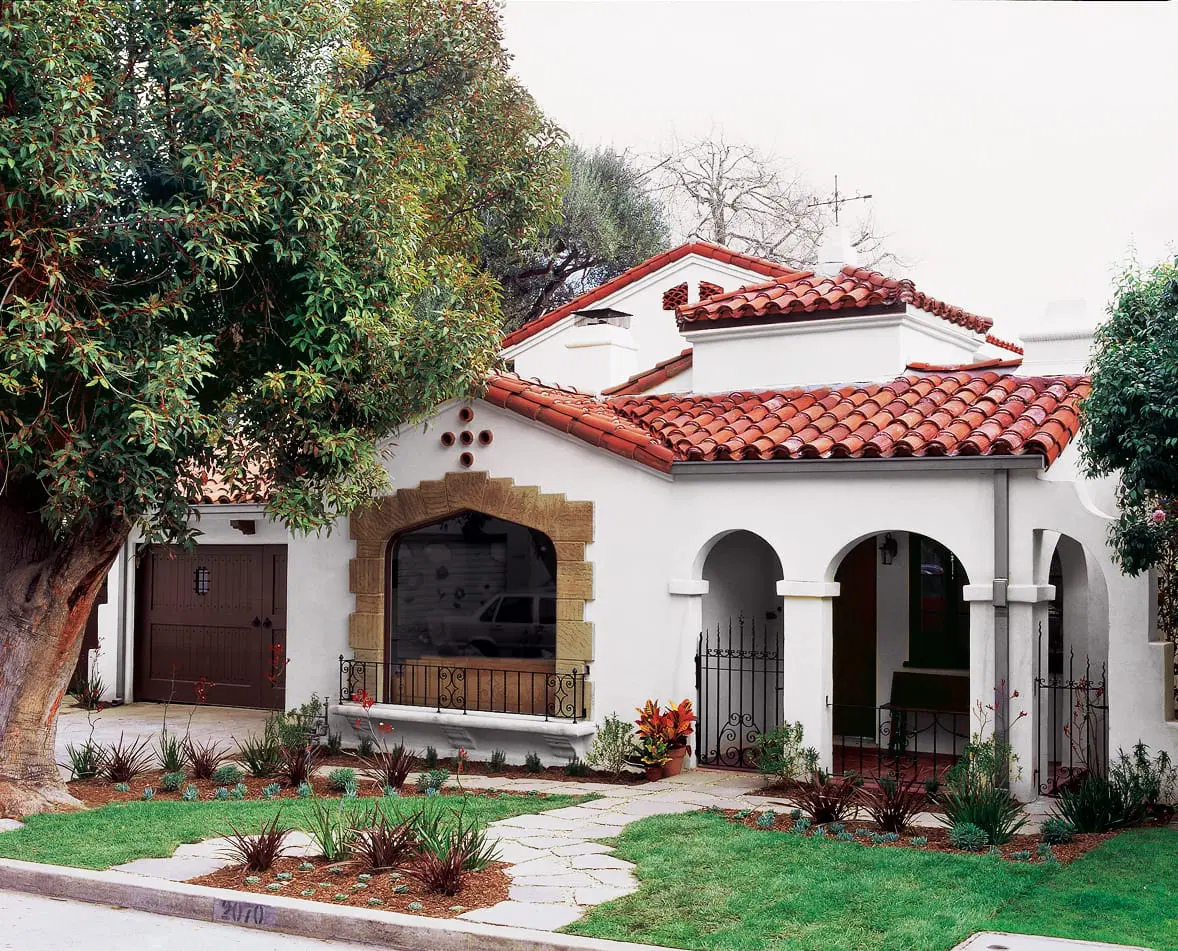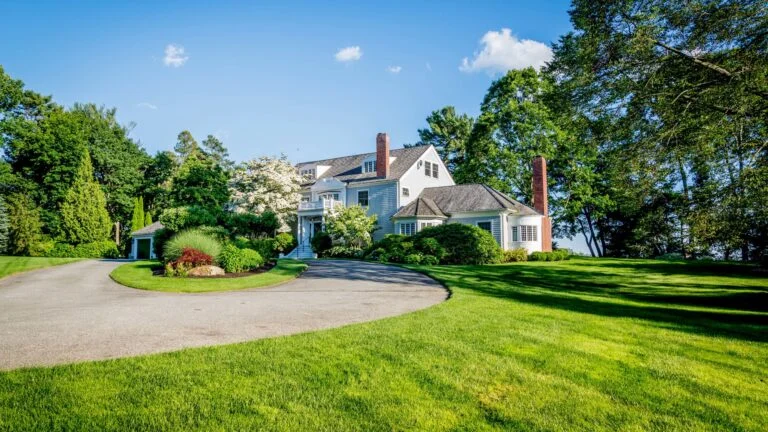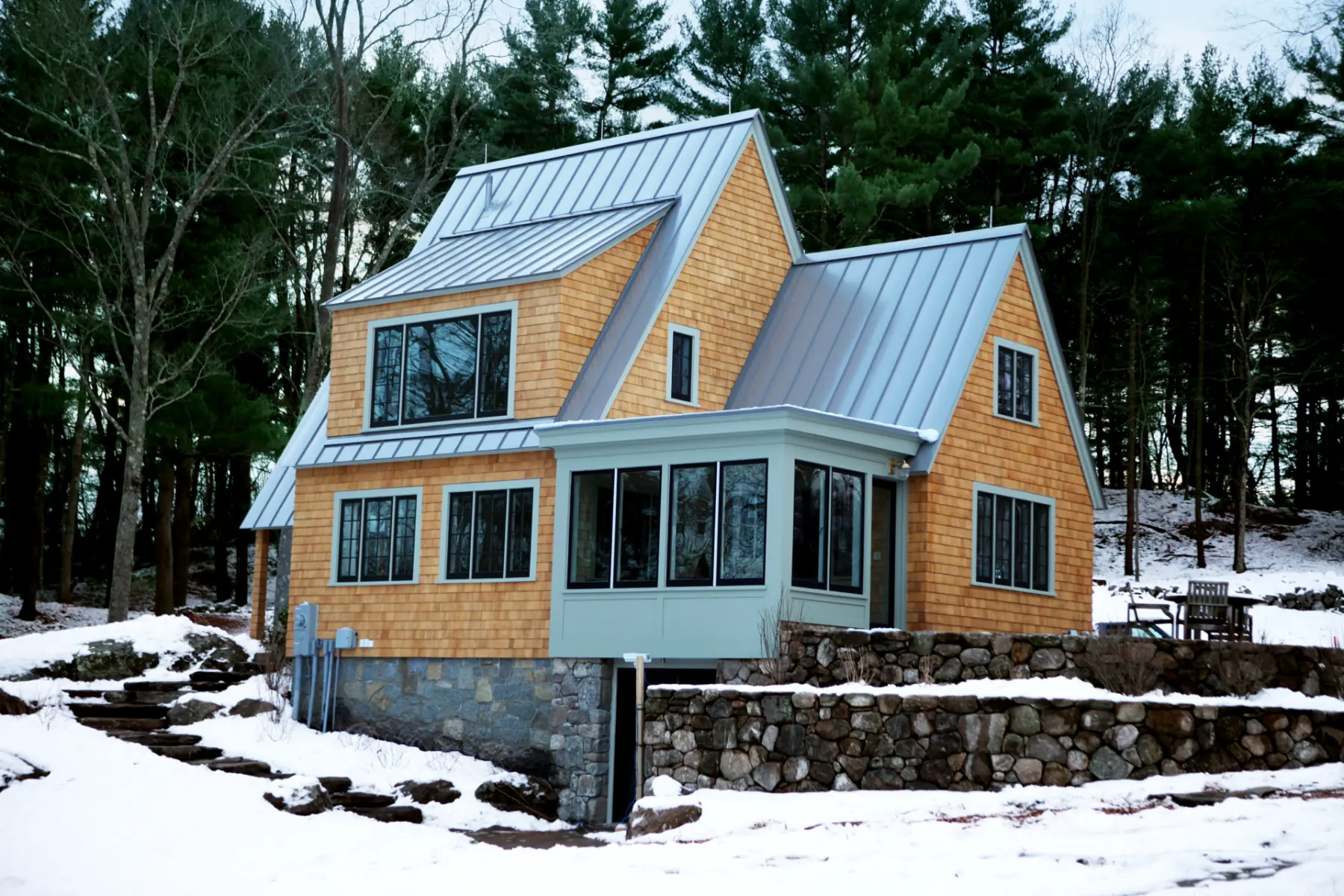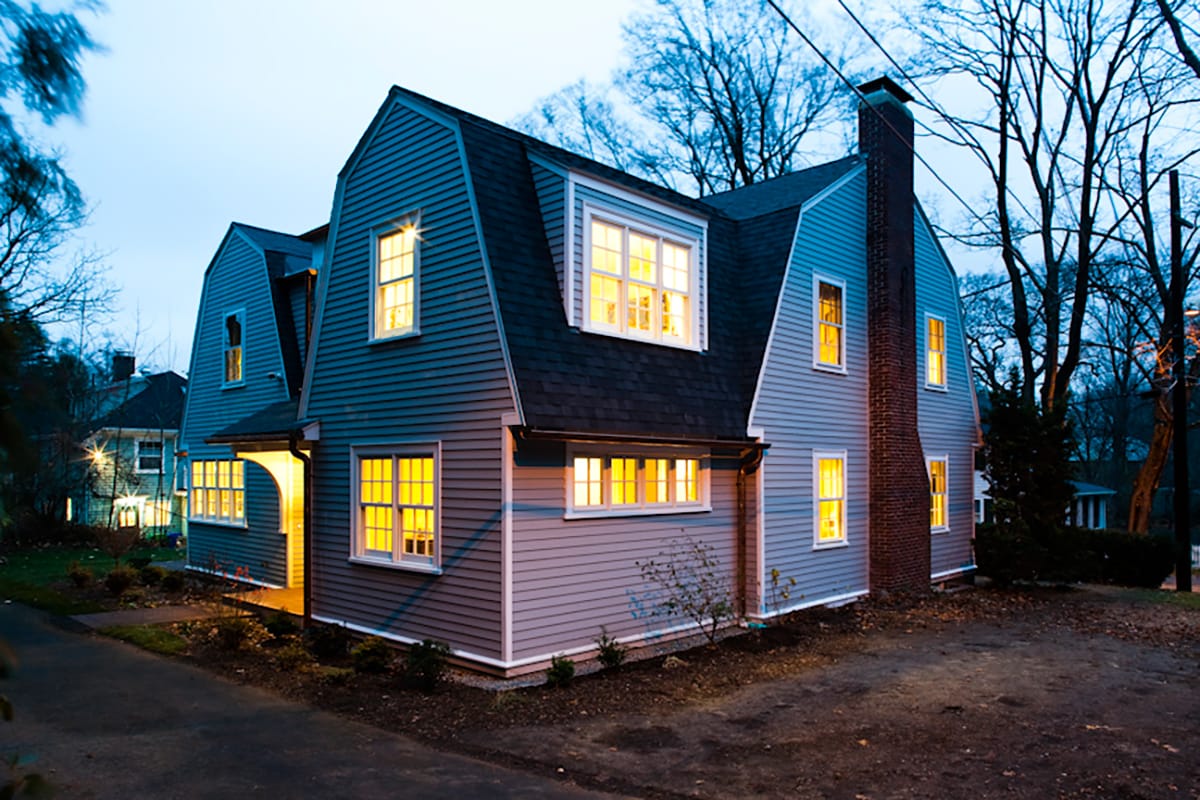Where Are They Now? Six This Old House Properties That'll Make You Rethink Your Weekend Projects
A deep dive into property values and growth of six This Old House project homes, from Los Angeles to Manchester-by-the-Sea, revealing the real impact of quality renovations on real estate values.

A Deep Dive into Property Values from Los Angeles to Manchester-by-the-Sea
You know, I've been watching This Old House since I was knee-high to a grasshopper, back when my dad would pause his Saturday morning coffee to watch Norm explain why you should never skip the pilot holes (advice I didn't heed until I cracked my third piece of trim, but that's another story). After all these years of watching the masters at work, I got curious about something: What happened to those beautiful homes after the cameras stopped rolling?
I spent a weekend diving into property records and Zillow listings - partly for research, partly because I was avoiding installing new baseboards in my own house (a job I've been "about to start" for three months now). What I found made me wish I'd bought stock in whatever company makes those red This Old House shirts.
Let me walk you through six This Old House properties I could actually track down addresses for - and trust me, finding these addresses is harder than getting a straight cut with a circular saw after your third cup of coffee.
The Six Houses That Started It All (For This Article, Anyway)
Here are the six This Old House properties I could track down with actual addresses and current market data:
- Los Angeles House (2011) - Silver Lake Spanish Colonial that's now worth over $2.2M
- Manchester-by-the-Sea Victorian (Season 23, 2001-2002) - Waterfront mansion that sold for $8.65M
- Essex Estate (Season 34, 2012-2013) - 14-acre hilltop compound
- Newton Victorian (Season 29, 2007-2008) - West Newton Hill classic
- Cambridge Victorian (Season 34, 2012) - Avon Hill beauty that tripled in value
- Additional properties with varying degrees of public information
What We've Learned: The Real This Old House Value Story
After analyzing these six properties, the picture is more complex than "This Old House renovation = instant profit." Here's what the numbers actually tell us:
Important note: Of these six properties, only the Manchester-by-the-Sea Victorian was actually sold after being featured on This Old House. The others were either sold before the show's involvement or remain in their original owners' hands. This makes direct comparison challenging, but the property value trends still tell an interesting story.
The Growth Championship: Location Beats Renovation
The Runaway Winner: 2070 Balmer Dr (LA) - 518% growth since 1998
- From $356K to $2.2M over 24 years
- Annual appreciation: ~21.6%
- Key factor: Silver Lake gentrification tsunami
The Solid Performer: 23 Bellevue Ave (Cambridge) - 170% growth since 2011
- From $1.21M to $3.24M over 13 years
- Annual appreciation: ~13.1%
- Key factor: Cambridge tech boom proximity
The Steady Eddies: Newton properties - 20-30% total growth
- 111 Temple St: ~$300K gain over 17 years (~1.8% annually)
- 19 Glen Rd: Estimated similar performance
- Key factor: Market stability over dramatic gains
The Luxury Holds: High-end properties - Modest but stable
- Manchester waterfront: Sold 2019 for $8.65M (the only post-show sale)
- Essex estate: ~$700K gain over 22 years (~0.8% annually)
- Key factor: Ultra-high-end markets move differently
The This Old House Effect: Quality Creates a Floor, Not a Ceiling
What's fascinating is that none of these properties dramatically underperformed their local markets. The renovation quality seems to act like good insurance - it doesn't guarantee outsized returns, but it protects against major value drops.
The Cambridge and LA properties succeeded because they were renovated right before their neighborhoods exploded in value. The This Old House work preserved and enhanced the character that made them desirable as the markets heated up.
The Newton properties show what happens when quality meets stability. Steady, predictable appreciation that tracks with the broader market - not exciting, but reliable.
The luxury properties (Manchester and Essex) demonstrate that at the high end, it's more about maintaining value than creating it. A $4.6M estate that holds its value is actually performing quite well.
The Property Deep Dives
2070 Balmer Dr, Los Angeles, CA 90039 - This Old House: Los Angeles House (2011)
Original Purchase Price: Unknown (last sold in 1998 for $356,500)
Current Redfin Estimate: $2,202,134
Built: 1933
Property Details: 4 bedrooms, 3 bathrooms, 2,281 square feet
Note: We've omitted the listing link and specific address details for this and other properties to respect the privacy of current homeowners. Only the Manchester property, which was sold after the show's involvement, includes a public listing link.

Analysis: Holy moly. This little 1933 Spanish Colonial in Silver Lake has basically become the poster child for "Location, Location, Location." The show featured this property during their rare West Coast venture, and boy, did they pick a winner. Silver Lake has transformed from a quirky artist enclave to one of LA's most coveted neighborhoods - think Brooklyn but with better weather and more coffee shops that serve $7 lattes.
The fact that this house was built in 1933 means it had that authentic California character that you just can't fake with modern construction. Those original hardwood floors, the built-in details, the kind of craftsmanship that makes you weep when you see what passes for "custom" these days - that's gold in today's market.
What's really wild is how This Old House timing worked out here. The 2011 renovation happened right as Silver Lake was hitting its stride but before the full gentrification tsunami hit. The homeowners got all the benefits of the This Old House treatment - updated systems, preserved character, and that indefinable "it was on TV" factor - just in time for the neighborhood to explode in value.
If I had to guess, I'd say the combination of the show's meticulous restoration approach and the neighborhood's trajectory added serious premium to this property's value. You can't put a price on having Tom Silva make sure your electrical actually works.
3 Norton's Point Rd, Manchester-by-the-Sea, MA 01944 - Season 23 (2001-2002)
Original Purchase Price: Unknown
Most Recent Sale: $8,650,000 (December 16, 2019)
Built: 1883
Property Details: 5 bedrooms, 6 bathrooms, 7,163 square feet
Property Photos: View on Zillow | Property images

Analysis: Sweet mother of pearl. This is what happens when This Old House meets serious New England money. We're talking about a 7,163 square foot Victorian mansion on 3 acres overlooking Manchester Harbor. The kind of place where you need a map to find the kitchen and the property taxes could fund a small town.
This house sold for $8.65 million in 2019, which in Manchester-by-the-Sea money is actually... well, it's still a lot of money, but it's also prime waterfront real estate in one of the most desirable coastal communities in Massachusetts. The This Old House team worked on this beauty during Season 23, and let me tell you, tackling an 1883 Victorian is like performing surgery on a patient who's been self-medicating with questionable electrical work for 120 years.
The fact that this house has held its value so well speaks to both the quality of the This Old House restoration and the timeless appeal of authentic Victorian architecture. Plus, Manchester-by-the-Sea is the kind of place where having "This Old House worked on it" is basically a certificate of authenticity. It's like a CarFax report, but for rich people's summer homes.
The waterfront location doesn't hurt either. As my realtor friend always says, "They're not making any more oceanfront property, but they're making plenty more houses."
The Essex House - Season 34 (2012-2013)
Last Sale: $3,900,000 on May 17, 2002
Current Estimated Value: $4,614,777
Built: 1910
Property Details: 9 beds, 7 baths, 9,986 square feet on 14+ acres

Analysis: Well, would you look at that. This isn't just any This Old House project - this is a legitimate estate. We're talking about a 14+ acre hilltop estate with views to Ipswich and Hog Island. When I first saw the address, I was expecting a nice colonial, maybe a renovated farmhouse. Instead, I found what can only be described as a compound.
The numbers tell quite a story here. Last sold for $3.9 million in May 2002, and now estimated at around $4.6 million. That's about 18% appreciation over 20+ years, which might sound modest until you remember we're talking about a nearly 10,000 square foot house built in 1910. Properties like this don't follow normal market rules - they're more like vintage cars or fine wine.
The timing of the This Old House renovation (2012-2013) was perfect. The property had been sitting for a decade after that 2002 sale, probably accumulating all those little issues that old houses love to spring on you. Having the This Old House crew come in and systematically address the mechanical systems, update the infrastructure, and preserve the historic character - that's exactly what a property like this needed.
Essex coastal properties have their own microclimate in the real estate world. This isn't just about square footage - it's about owning a piece of New England history with modern systems that actually work. Trust me, anyone who's ever tried to heat a 1910 house knows that's worth its weight in gold.
Newton Center - Season 29 (2007-2008)
Pre-show Sale: $1,500,000 on May 9, 2007
Current Estimated Value: $1,800,000+ (estimated based on comparable properties)
Built: 1897
Property Details: 6 beds, 4.5 baths, 4,238 square feet

Analysis: Now here's a property that tells a story about timing and market resilience. This 1897 Victorian sold for $1.5 million in May 2007, just two months before the This Old House crew arrived to work their magic. If you know anything about real estate history, you'll recognize that date - we were standing at the edge of a cliff, and nobody knew it yet.
Think about it: the homeowners bought this "grand and exceptionally well-maintained" Victorian in West Newton Hill for $1.5 million, then immediately had This Old House come in and renovate it during the 2007-2008 season. That's like buying a classic car and then having Jay Leno's garage crew tune it up right before the collector car market went sideways.
But here's the thing about Newton - it's bulletproof. Well, not literally (I tried that once with a nail gun and learned some valuable lessons about drywall repair), but market-wise, Newton just doesn't do dramatic downturns. Good schools, solid neighborhoods, reasonable commute to Boston - these are the fundamentals that keep property values stable even when everything else is going crazy.
The fact that this house has likely appreciated to around $1.8 million or more despite being renovated during the financial crisis shows the power of combining quality work with a quality location. The This Old House team's approach to preserving the Victorian character while updating the systems created a property that could weather any storm.
The Cambridge 2012 House - Season 34 (2012)
Pre-show Sale: $1,210,000 on November 21, 2011
Current Estimated Value: $3,241,400
Built: 1885
Property Details: 4 beds, 3 baths, 2,366 square feet

Analysis: Sweet mother of mortise and tenon joints. This 1885 Victorian in Cambridge has basically tripled in value since the renovation. We're talking about a house that sold for $1.21 million in November 2011 - just before the This Old House crew arrived - and is now estimated at over $3.2 million. That's the kind of math that makes me want to go back to school for real estate instead of continuing to learn plumbing the expensive way.
This property sits "at the base of Avon Hill" in Cambridge, which is real estate speak for "close enough to Harvard that you can smell the academic achievement, but not so close that you can hear the undergrads." The timing here was perfect - the homeowners bought right before the This Old House renovation, which is like getting a tune-up right before entering a race.
Cambridge real estate has been on an absolute tear for the past decade, and this house rode that wave beautifully. The combination of the 1885 Victorian architecture (those high ceilings, original details, and the kind of character you can't buy at Home Depot) with the This Old House team's expertise in preserving historic features while updating systems - that's a recipe for serious appreciation.
The fact that this house has seen nearly 170% appreciation in just over a decade tells you everything you need to know about the power of location plus quality renovation. It's also a reminder that sometimes the best investment is simply not screwing up something that was already pretty great to begin with.
The Bottom Line: What This Actually Means for Regular Homeowners
As someone who's learned most of their home repair skills through expensive trial and error (ask me about the time I "improved" my kitchen plumbing and ended up with a very artistic ceiling stain), I'm not suggesting you should renovate your house expecting This Old House-level returns.
But here's what I took away from diving into these numbers: The show's approach - respecting the original architecture, doing the infrastructure work properly, and not cutting corners on the stuff people can't see - creates properties that hold their value regardless of market conditions.
The real lesson isn't about the money. It's about the approach. Whether you're in a hot market like Cambridge or a steady one like Newton, quality work done with respect for what came before seems to pay dividends over time.
The properties that succeeded wildly did so because they were in the right place at the right time, but they were able to capitalize on that timing because the renovation work was done properly. The ones that showed modest gains still outperformed what might have happened if the work had been done poorly.
As I finally get around to tackling that bathroom renovation I've been avoiding, I'm keeping Tom Silva's voice in my head: do it right the first time, respect what's already there, and don't be afraid to call in a professional when you're in over your head.
Even if I'll never have property appreciation like that LA Spanish Colonial, at least I won't have to explain to future buyers why there's a mysterious bulge in the bathroom wall.
Sources: Property values from Redfin, Zillow, and various real estate sources. Market analysis based on publicly available data and way too much time spent clicking through property listings when I should have been working on those baseboards.
Note: Property values shown are estimates and can change faster than I can explain why your weekend electrical project needs to be redone by someone who actually knows what they're doing.